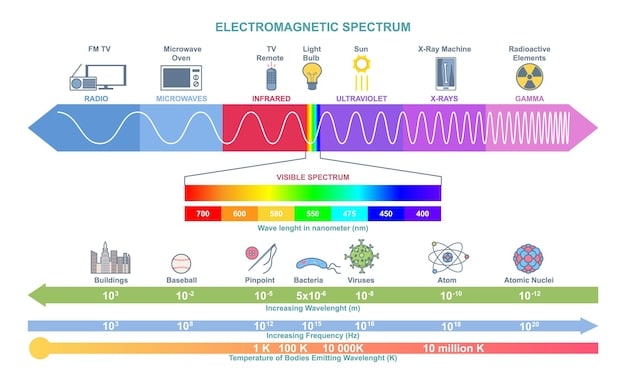Binaural Beats Therapy: The 2025 Secret to Laser Focus?

Binaural beats therapy is explored as a potential method for enhancing focus in this 2025 analysis, examining its mechanisms, effectiveness, and future applications.
Can sound waves really sharpen your focus? This 2025 analysis explores if binaural beats therapy is the secret to laser focus, diving into the science behind the sounds and if they live up to the hype.
Understanding Binaural Beats Therapy in 2025
Binaural beats therapy has gained traction as a non-invasive method for potentially enhancing focus and cognitive function. But what exactly are binaural beats, and how might they work? This section delves into the fundamentals of this auditory phenomenon.
The Science Behind Binaural Beats
Binaural beats are auditory illusions created when two different tones are played in each ear simultaneously. The brain perceives a third tone, the binaural beat, which is the difference between the two frequencies.
How Binaural Beats Affect the Brain
These beats are believed to influence brainwave activity, potentially shifting the user into different mental states associated with focus, relaxation, or sleep. The entrainment of brainwaves to specific frequencies is a key aspect of this therapy.
- Frequency Following Response: The brain’s natural tendency to synchronize its electrical activity with external stimuli.
- Brainwave States: Binaural beats are associated with different brainwave states, such as Alpha (relaxation), Beta (focus), and Theta (meditation).
- Neural Plasticity: The potential for binaural beats to induce long-term changes in neural networks.

In conclusion, understanding the science behind binaural beats therapy is crucial for assessing its potential benefits and limitations. Further research is needed to fully elucidate the mechanisms involved and optimize its application for enhancing focus.
The Promise of Laser Focus: Binaural Beats and Concentration
One of the primary claims surrounding binaural beats is their ability to enhance focus and concentration. This section examines the evidence supporting this claim, exploring how specific frequencies may influence cognitive performance.
Binaural Beats for Enhanced Cognitive Performance
Studies suggest that listening to binaural beats can improve cognitive functions such as attention, memory, and problem-solving skills. The specific frequencies used are believed to play a crucial role in determining the type of cognitive enhancement achieved.
Real-World Applications and Case Studies
From students seeking to improve their study habits to professionals needing to maintain focus during demanding tasks, anecdotal evidence suggests a wide range of applications for binaural beats therapy in enhancing concentration.
- Improved Study Habits: Students using binaural beats to focus during study sessions.
- Increased Productivity: Professionals utilizing binaural beats to maintain focus in high-pressure environments.
- ADHD Management: Individuals with ADHD exploring binaural beats as a complementary therapy for improving attention.
In summary, the use of binaural beats to attain laser focus shows promise, yet further research is required to thoroughly understand its efficacy and pinpoint the best protocols for different cognitive requirements.
Comparing Binaural Beats with Other Focus Techniques
Binaural beats therapy is just one of many techniques aimed at improving focus and concentration. This section compares it to other popular methods, highlighting its unique advantages and disadvantages.
Mindfulness Meditation vs. Binaural Beats
Mindfulness meditation involves focusing on the present moment, while binaural beats use auditory stimuli to influence brainwave activity. Both techniques aim to improve focus, but they differ significantly in their methods.
Pomodoro Technique vs. Binaural Beats
The Pomodoro technique uses structured time intervals for work and breaks, while binaural beats provide a continuous auditory stimulus. These two methods can be used effectively together.

In conclusion, while binaural beats hold potential as a focus-enhancing tool, it’s important to weigh them against other established methods. Tailoring your approach, potentially blending different strategies, may yield optimal results for sustained concentration.
Practical Guide: How to Use Binaural Beats for Focus in 2025
For those interested in exploring binaural beats for focus, this section offers a practical guide on how to get started, including selecting the right frequencies, choosing the appropriate equipment, and optimizing the listening environment.
Selecting the Right Frequencies
The most effective frequency range for focus is typically in the Beta range (16-30 Hz). Experimenting with different frequencies within this range can help you find what works best for you. Also, be sure to purchase your beats from reputable vendors.
Equipment and Environment
High-quality headphones are essential for experiencing the full effect of binaural beats. A quiet and comfortable environment can also enhance the listening experience.
- Headphone Quality: Invest in comfortable, noise-canceling headphones for optimal sound quality.
- Listening Environment: Choose a quiet space free from distractions.
- Session Length: Start with short sessions (15-30 minutes) and gradually increase the duration as needed.
In short, achieving peak focus with binaural beats necessitates careful attention to frequency selection, equipment quality, and environmental factors. Experiment to find a method that complements your unique cognitive needs and preferences.
The Future of Binaural Beats: 2025 and Beyond
As technology continues to evolve, the future of binaural beats therapy looks promising. This section explores potential developments in research, technology, and applications, envisioning how binaural beats may be used to enhance focus in the years to come.
Advancements in Brainwave Entrainment Technology
Future research may lead to more precise and personalized brainwave entrainment techniques, optimizing the effectiveness of binaural beats for specific cognitive tasks.
Integration with Virtual and Augmented Reality
Binaural beats could be integrated with virtual and augmented reality experiences to create immersive environments that promote focus and productivity.
In closing, the outlook for binaural beats therapy is bright, with technological progresses pointing toward personalized and integrated solutions for sustained focus. Staying informed about the latest research and developments is essential for harnessing the full potential of this auditory approach.
| Key Point | Brief Description |
|---|---|
| 🎧 Binaural Beats | Auditory illusions that might influence brainwave activity and mental states. |
| 🧠 Brainwave Entrainment | Binaural beats are believed to synchronize with brainwaves to alter cognitive states. |
| 🎯 Laser Focus Potential | Studies suggest binaural beats may enchance cognitive functions like memory and attention. |
| 💡 Future Integration | Binaural beats hold the potential to be integrated with VR/AR for immersive focus. |
Frequently Asked Questions (FAQ)
▼
Binaural beats are auditory illusions that occur when two different frequencies of sound are played in each ear. The brain processes a “beat” at the difference of these frequencies, which can influence brainwave patterns.
▼
Generally, binaural beats are considered safe for most people. However, individuals with epilepsy or those prone to seizures should exercise caution and consult with a healthcare professional before use.
▼
Session lengths can vary, but starting with 15-30 minute sessions is a good approach. You can adjust the duration based on your comfort and how your body responds to the therapy, ensuring it fits your schedule.
▼
Beta frequencies (16-30 Hz) are generally recommended for focus and concentration. Experimentation within this range can help you find the specific frequencies that work best for improving your personal focus and productivity.
▼
While some studies suggest positive effects, more rigorous research is needed to fully validate the effectiveness of binaural beats therapy for improving focus. Results vary, and it’s not a guaranteed solution for everyone.
Conclusion
In conclusion, this 2025 analysis reveals that while binaural beats therapy holds promise as a tool for enhancing focus and cognitive function, it is not a guaranteed “secret” to laser focus. The effectiveness of binaural beats can vary from person to person, and it’s essential to approach this therapy with realistic expectations. Further research and personalized experimentation are critical to fully understanding its potential benefits and limitations.





